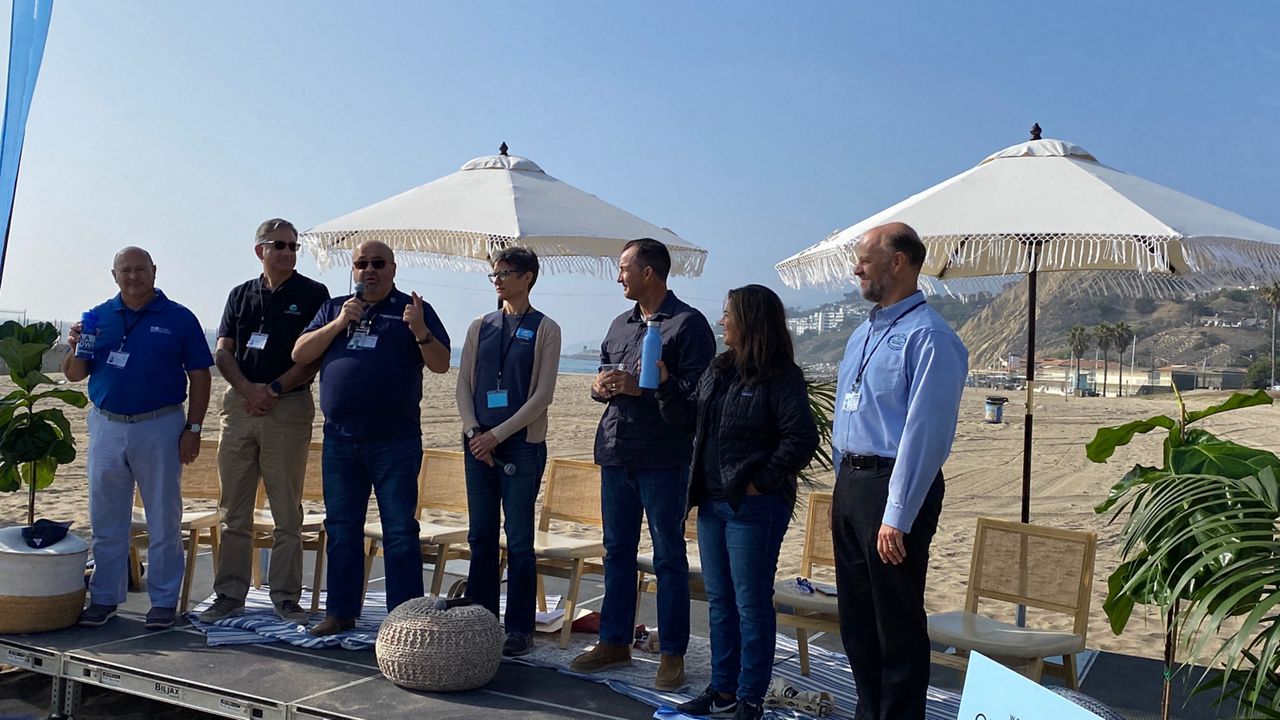At the end of a long morning talking about water, Adel Hagekhalil called his contemporaries to action — asking them to take a pledge to take water as seriously as he does.
“I think we all should take the One Water pledge today,” he said. There was some awkward, disbelieving laughter among the dozens of folks in attendance, but Hagekhalil, the new general manager of the Metropolitan Water District of Southern California, didn’t so much as wink. “Let’s pledge to One Water today, and every day, to create safe, reliable, resilient water for everyone while protecting the environment and enhancing the quality of life for all.”
Hagekhalil’s One Water pledge was a high point in the Heal the Bay One Water Day panel discussion, looking toward the future of water in Southern California — namely, how the Southland can ensure it has enough water for people to drink, use and enjoy for generations to come.
Heal the Bay, the nonprofit advocates for coastal water and inland watersheds, convened its event at Will Rogers Beach as a way to bring together a dozen agencies and water providers that, historically, haven’t seen eye to eye with one another — or Heal the Bay, for that matter. The event was seen as an opportunity to bring water-focused organizations and engineering firms together to cross-collaborate, while also raising money for Heal the Bay.
“What we’ve seen over the last few years really has been an evolution toward realizing where we are aligned and building on that,” Heal the Bay CEO Shelley Luce told Spectrum News 1.
That alignment, she said, has been a “One Water” vision — the development of an integrated urban water cycle, where one drop of water could be followed from a storm, to groundwater, to drinking water, to waste water, to recycling and back into the water table. That vision is outlined in the One Water LA 2040 Plan, published in 2018 by the city of Los Angeles.
But the key to building that alignment, Luce said, was best articulated by the new head of Los Angeles Sanitation and Environment’s new director, Barbara Romero: a unified front.
“What I saw in this year’s state budget — the reason the Bay Area got the money they did is because it’s clear what they’re asking for from the legislators,” Romero said. “It’s our job collectively to get our message together and get our priorities straight; we can’t afford to miss the opportunity.”
This summer, the California Legislature approved a budget including more than $5 billion for water and drought resistance.
“We need to be saying, with all of these different agencies, all of these different responsibilities, we have to pick the things we want to happen, and we all push for that,” Luce said.
The other part of that is ensuring that everyone who needs water — which is everyone — realizes the importance of the resource. Marty Adams, general manager of the Los Angeles Department of Water and Power, noted that water shortages may occur as soon as within the next year.
“The challenge will be in how we build conservation as a hard fixture measure as opposed to a customer behavior. That’ll make it tougher in future droughts because the elasticity in water demand is not what it was before,” Adams said. “But once you’ve changed the fixtures out, the lines and everything else, there’s not as much room, and that’s where careful planning needs to come in.”
That will include ensuring water systems have multiple sources and storage systems, including recycled and treated water.
“I think we all recognize what worked last century, in terms of our systems — stormwater flow to the ocean, wastewater being treated and discharged, water coming from up north or Colorado, will not work moving forward,” said Robert Ferrante, general manager of the LA County Sanitation Districts. The county, he said, is working on a pilot program that will allow storm drains to discharge into the sewer system, clean pollutants from the water and add to potential water supplies.
“We take water for granted, and we forget that water is essential to firefighting, to drinking, to our health and our safety; hospitals don't run without water. Fire cannot be fought without water. Businesses cannot run without water schools cannot be schools without water. Homelessness cannot be addressed without water. So water is life,” Hagekhalil said. “Sometimes we’re willing to pay $200 for our cell phone, but are we willing to pay that money for the future of our water?”



